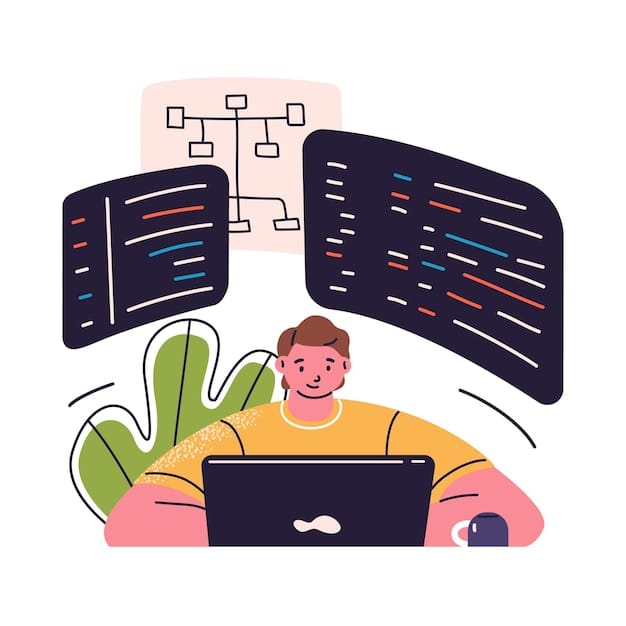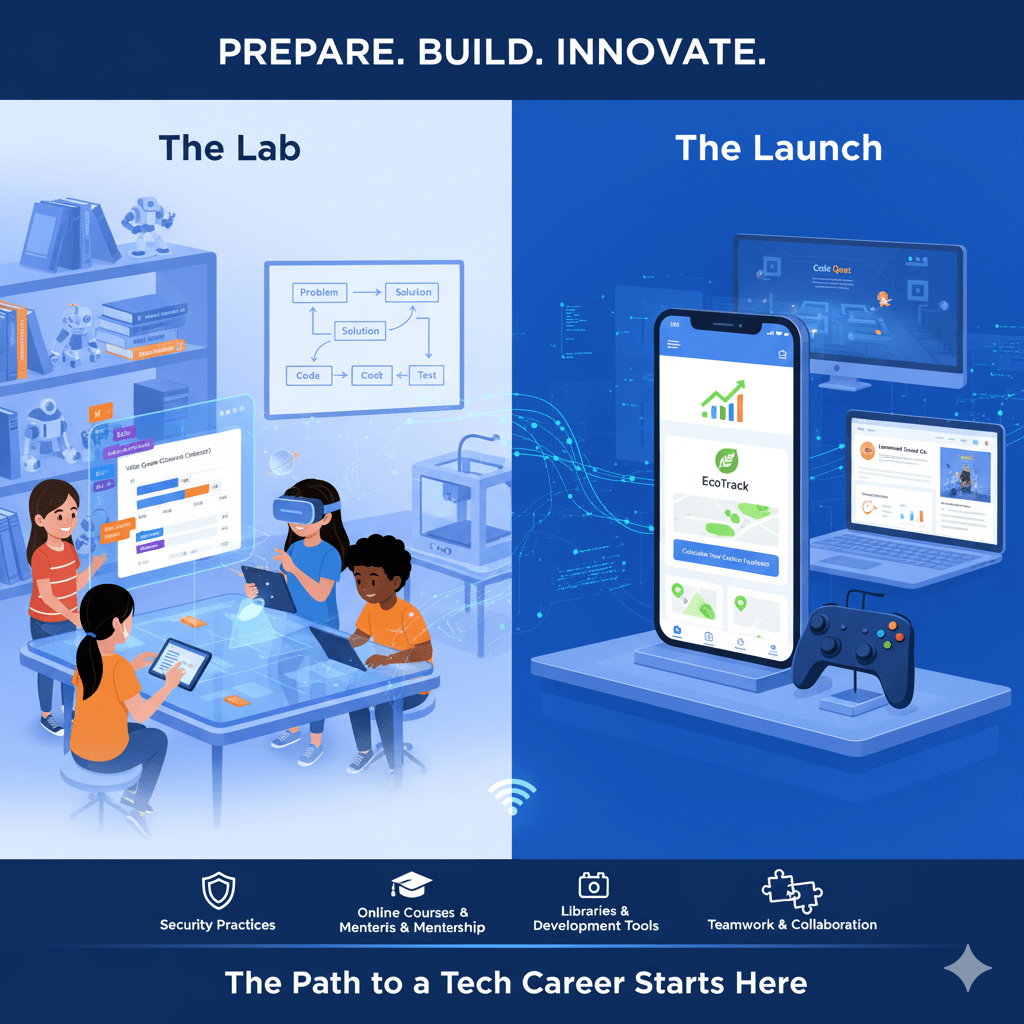What Students Build in Their First Robotics Course with Codeyoung
Beginner robotics for kids isn’t just a subject; it's a passion. It’s a fun, hands-on way to discover science, creativity, and technology. With Codeyoung, learn step by step. They start with simple robotics kits for students, which help them easily understand the basics. Then, they move on to coding and programmable machines. Kids don't just read about technology; they build and program their own robots.
This hands-on approach makes sensors, coding, and AI easier to understand, enhancing the overall learning experience. This practical approach not only strengthens problem-solving and critical thinking but also builds confidence and sparks curiosity.
What makes Codeyoung stand out in kids' education is its structured, play-based method of teaching robotics. Each activity blends engineering with interactive games, turning learning into an enjoyable adventure. In a world of self-driving cars and intelligent machines, robotics helps young people become creators, not just tech consumers. These beginner courses get students ready for real jobs in computer science, engineering, and innovation. They provide a strong foundation to help shape the future.
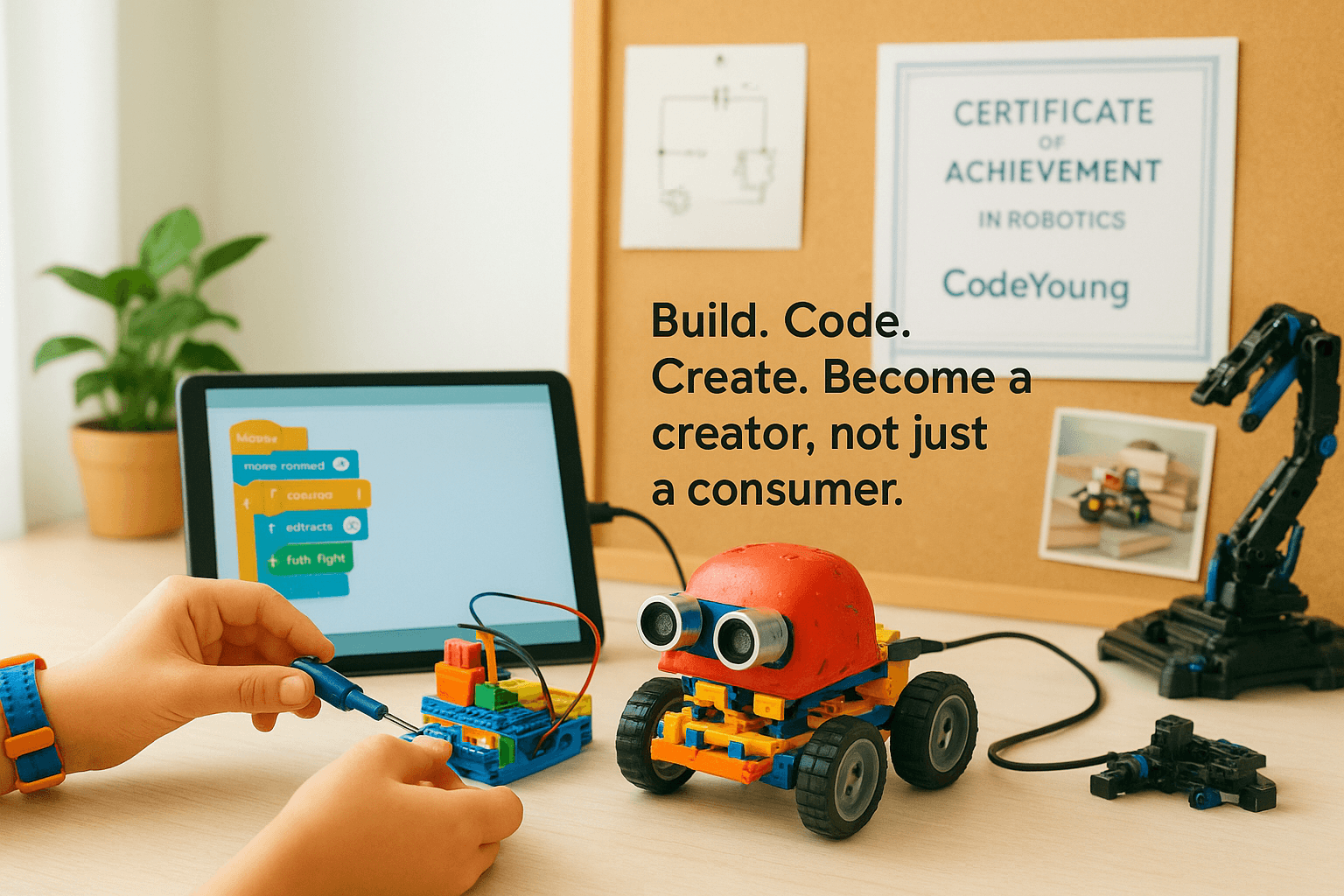
Getting Started with Simple Robotics Kits for Students
When one learns robotics, they do not dive directly into the intricate machine. Instead, children start with beginner robotics student kits to gain hands-on experience. These kits are made for young minds. They use safe, sturdy parts that are easy to assemble.
A robotics kit usually includes motors, wheels, sensors, connectors, and sometimes small pre-programmed chips.
Every part of the kit covers a new lesson:
Motors show how to move
Sensors explain how to react
Connectors illustrate design thinking
Why Robotics Kits are a Powerful Tool for Kids' Education
Robotics kits are like puzzle boxes for the future engineers of the world. Children unpack the box and are immediately excited because they know they are going to make something that can move, glow, or even “think.” What one loves about the sets for building robots is that they do not need to know anything beforehand. Once complete instructions are there, even small children can start assembling parts and gaining practical experience from day one.
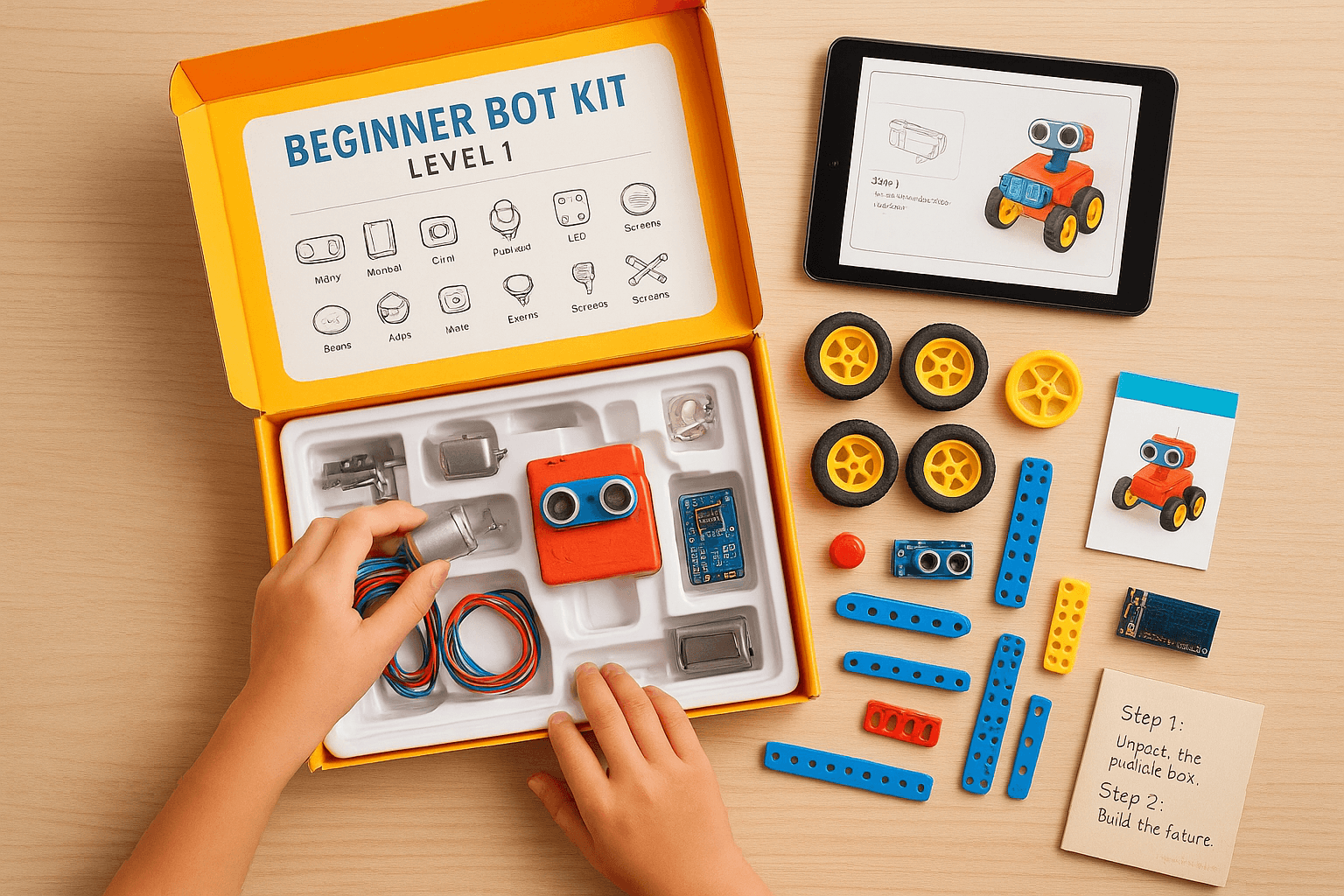
A kit may include a light sensor, which enables a robot to trace a line on the ground. As children experiment with the robot, they begin to grasp what coding is. “If the sensor is on black, move left. If on white, move right”. This basic cause-and-effect chain teaches the basics of computer programming. Robotics often teaches coding earlier than desktop training. This is because you see instant results from your commands. Basic robotics sets are also significant in developing complex problem-solving skills.
As soon as a robot does not perform within expectations, children are forced into troubleshooting, experimenting, and trying once again. This iterative building, experimenting, and refining is akin to real-world engineering in kids' robotics, where children learn to tackle complex problems, resilience, and logical analysis. Parents remark that children who play with robotics sets tend to develop better concentration spans and problem-solving skills than their peers who engage only in passively playing video games.
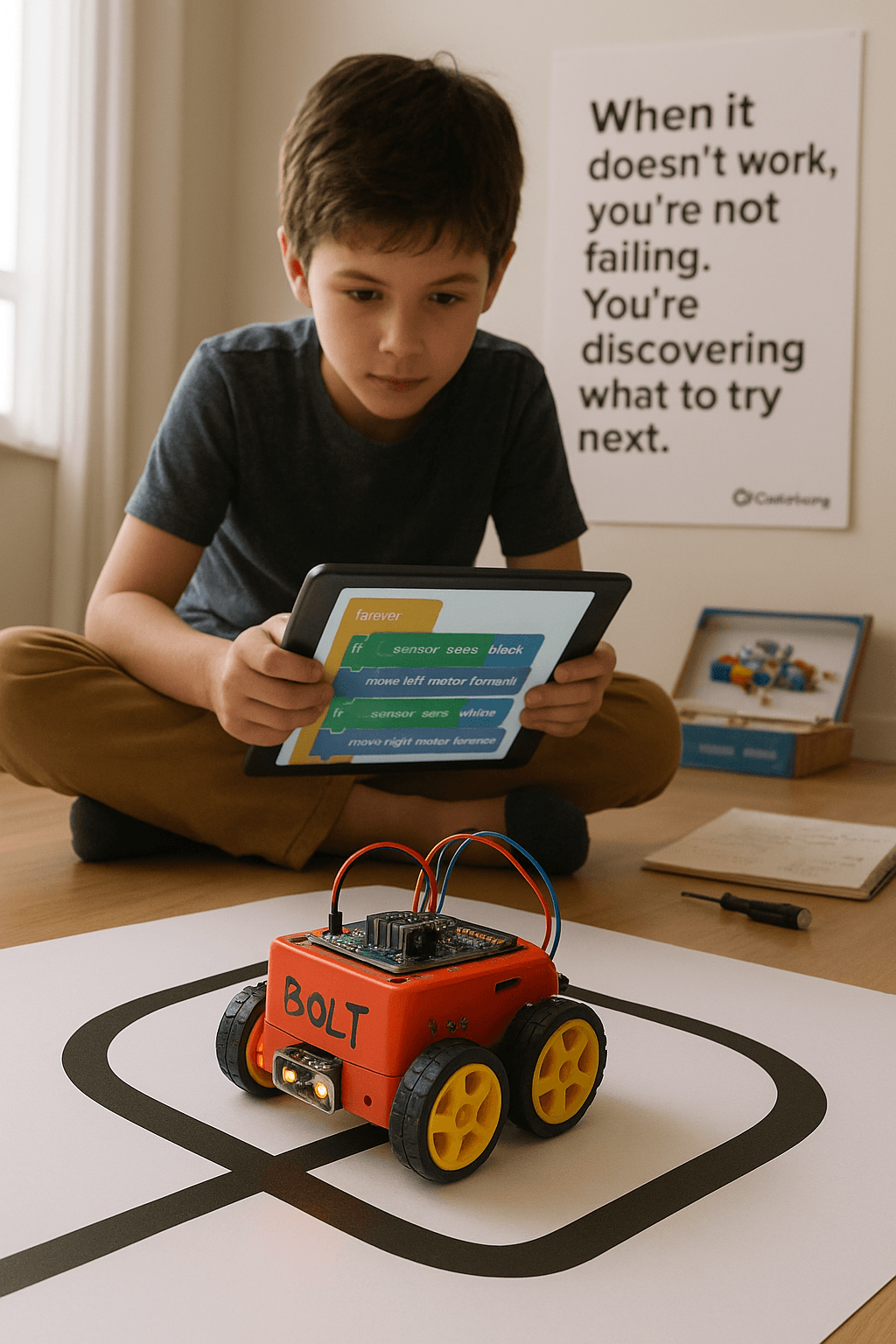
Codeyoung Robotics Course Project Ideas: What Students Can Expect to Build
One of the most exciting aspects of Codeyoung’s robotics classes is the chance to build lifelike robots. Instead of just reading about robotics concepts, students dive into engaging projects that grow more complex as they advance. These projects not only teach robotics but also help students apply STEM concepts in ways that feel natural and fun. Each project introduces new skills—some focus on mechanics, others on programming, and some on combining both.
1. Moving Brushbot
The Brushbot is often the very first robot kids build. Powered by simple vibration motors, this robot “dances” or “brushes” across a surface. The Brushbot seems simple, but it teaches kids critical skills. It helps high school students grasp the basics of electrical engineering. They also learn about movement in robotics. They understand that motors can convert energy into motion and that even minor changes in design can significantly impact how the robot behaves.
Exploring their first robotics projects is ideal for young kids. They can see instant results—assemble the parts, turn on the motor, and watch the robot come to life. Creating something that works brings joy and builds confidence. This encourages kids to stay engaged in their learning and helps them complete tasks successfully. The Brushbot also introduces problem-solving. If it doesn’t move straight, kids experiment with balance, weight distribution, and motor placement until it works as intended.
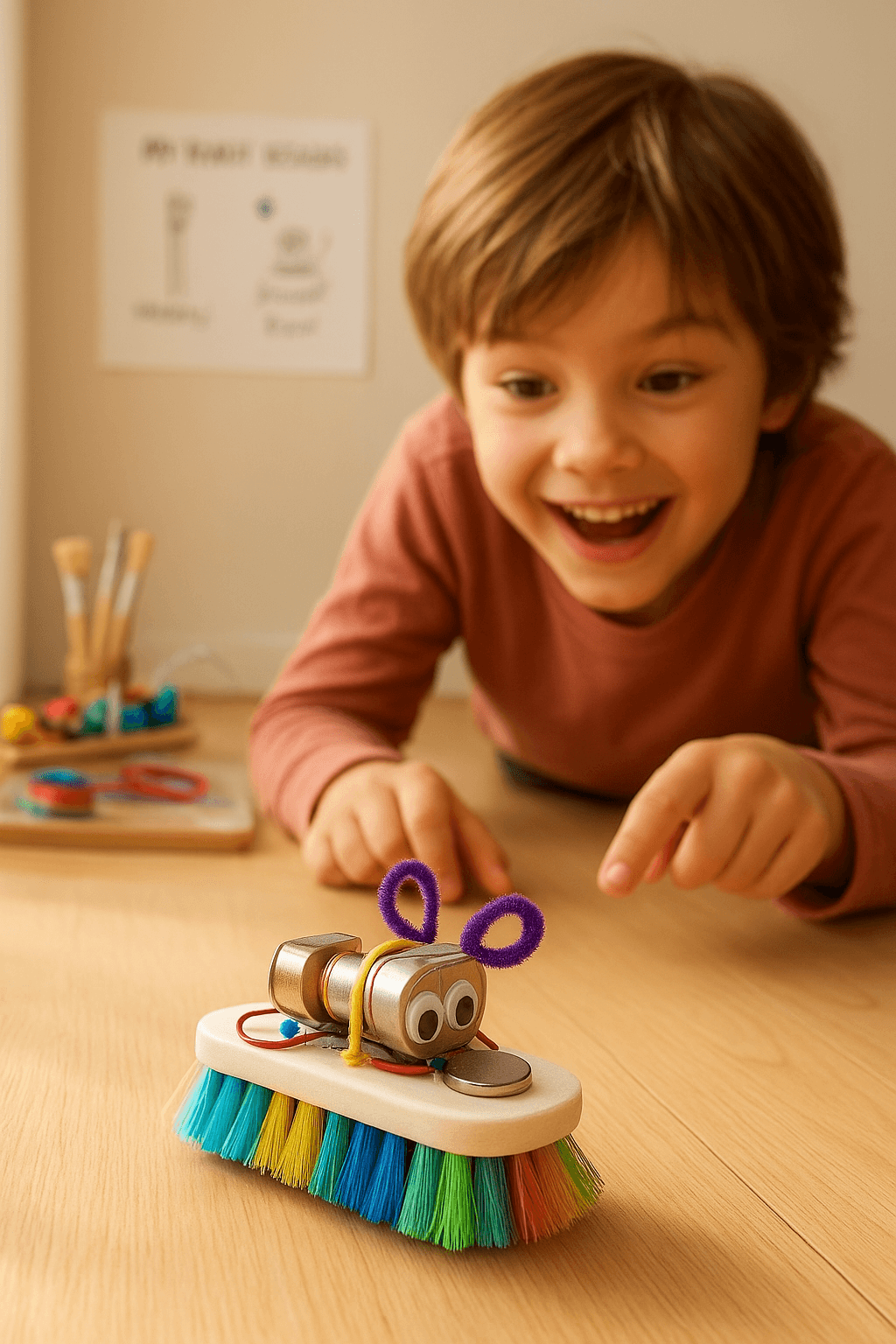
2. Line-Following Robot
Once young people master the Brushbot, they can move to a new challenge: the Line-Following Robot. This project introduces sensors that can detect black and white lines on the ground, enabling kids to learn coding through practical applications. By programming the robot to respond to these signals, children see how automation works in real life.
Line-following robots connect directly to real-world applications. For instance, self-driving cars use similar technology to stay in lanes on roads. Kids watch their little robot follow a path. They learn the basics of computer vision and autonomous systems. It’s a fun way to explore robotics. It’s a fun way to link classroom activities with real engineering problems.
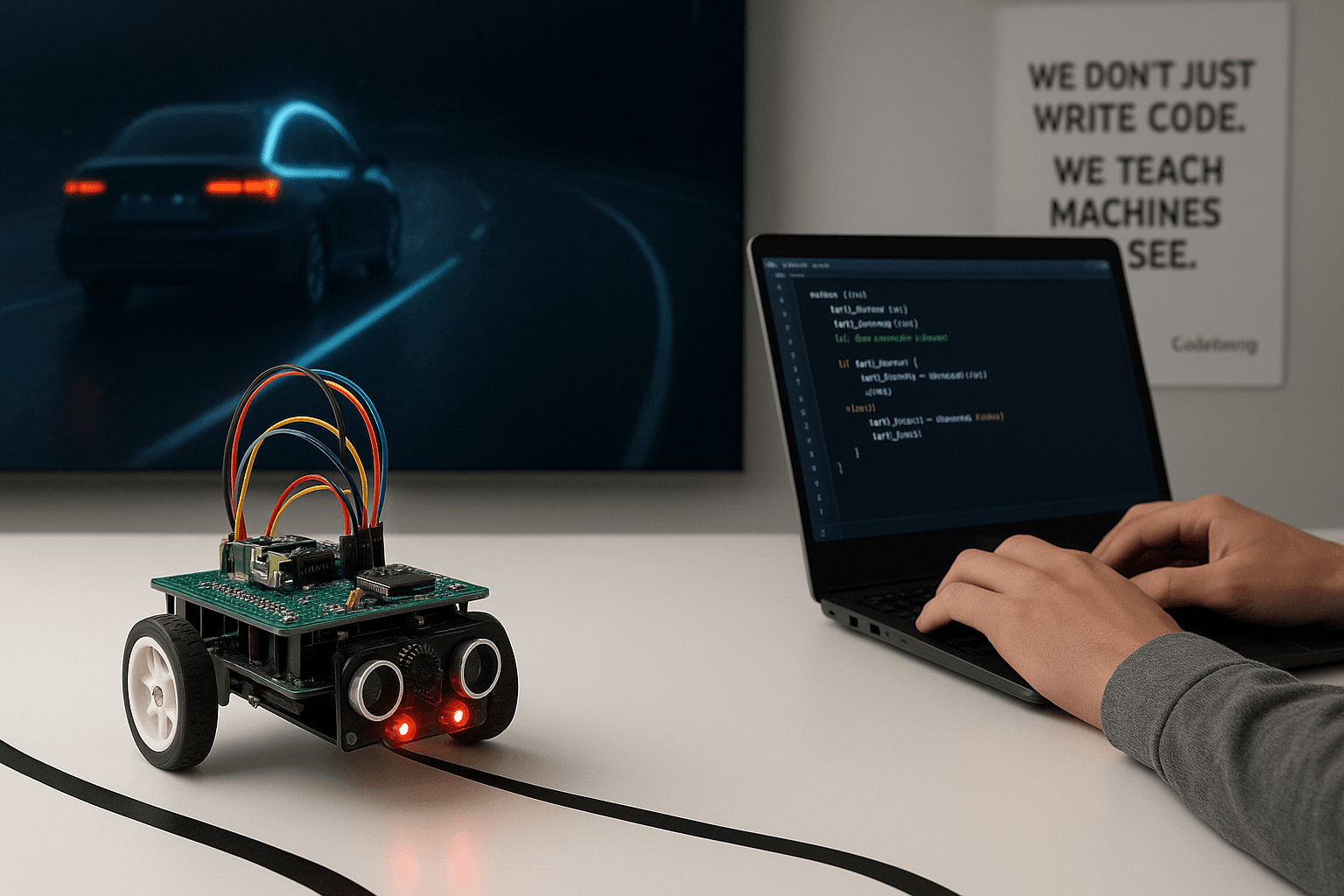
3. Obstacle-Avoiding Robot
Next is the Obstacle-Avoiding Robot. This robot shows kids how sensors detect obstacles. This project uses sensors that detect barriers in front of the robot, helping it perform physical tasks. If something blocks its way, the robot changes direction. This is where students learn decision-making in robotics, how machines can “think” and respond to their environment.
Kids learn about problem-solving with artificial intelligence in this project. This concept is often seen in robotics competitions, especially within the age group of enthusiastic young learners. They know that robot toys can be programmed not only to follow instructions but also to adapt to unexpected situations. This project often sparks excitement because it makes robots feel alive and interactive.
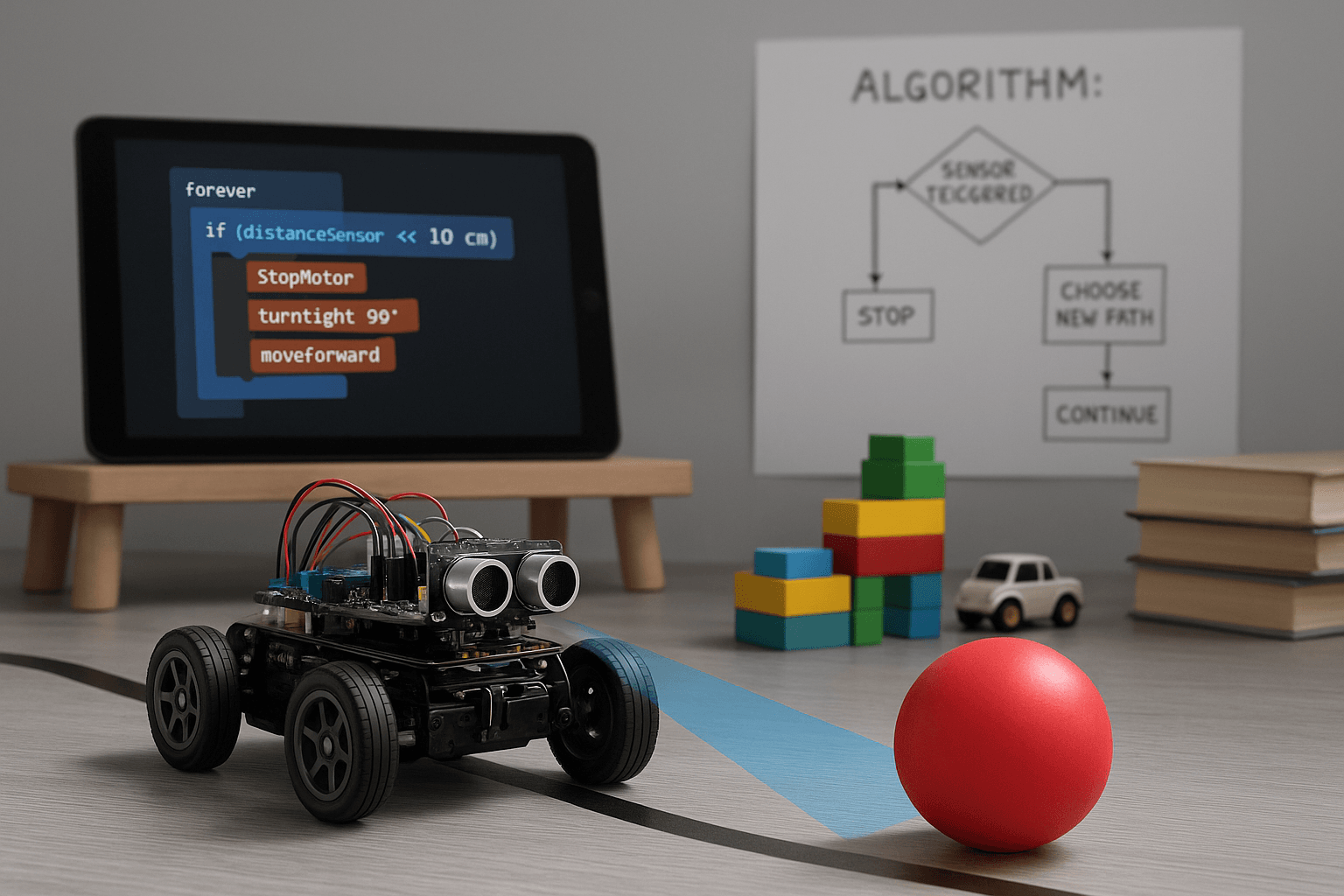
4. Robotic Car Controlled by Code
For older students or kids ready for a challenge, the Robotic Car project is a favorite. This robot is controlled by code, meaning kids can program it to move forward, backward, or turn left and right. They write commands in an easy programming language. This shows how coding leads to real-world actions.
This project is mighty because it connects robotics with computer programming. Students not only develop coding skills but also see how machines execute instructions with precision. For those looking beyond beginner robotics for kids, the robotic car provides the perfect next step, as it engages them in more advanced programming concepts.
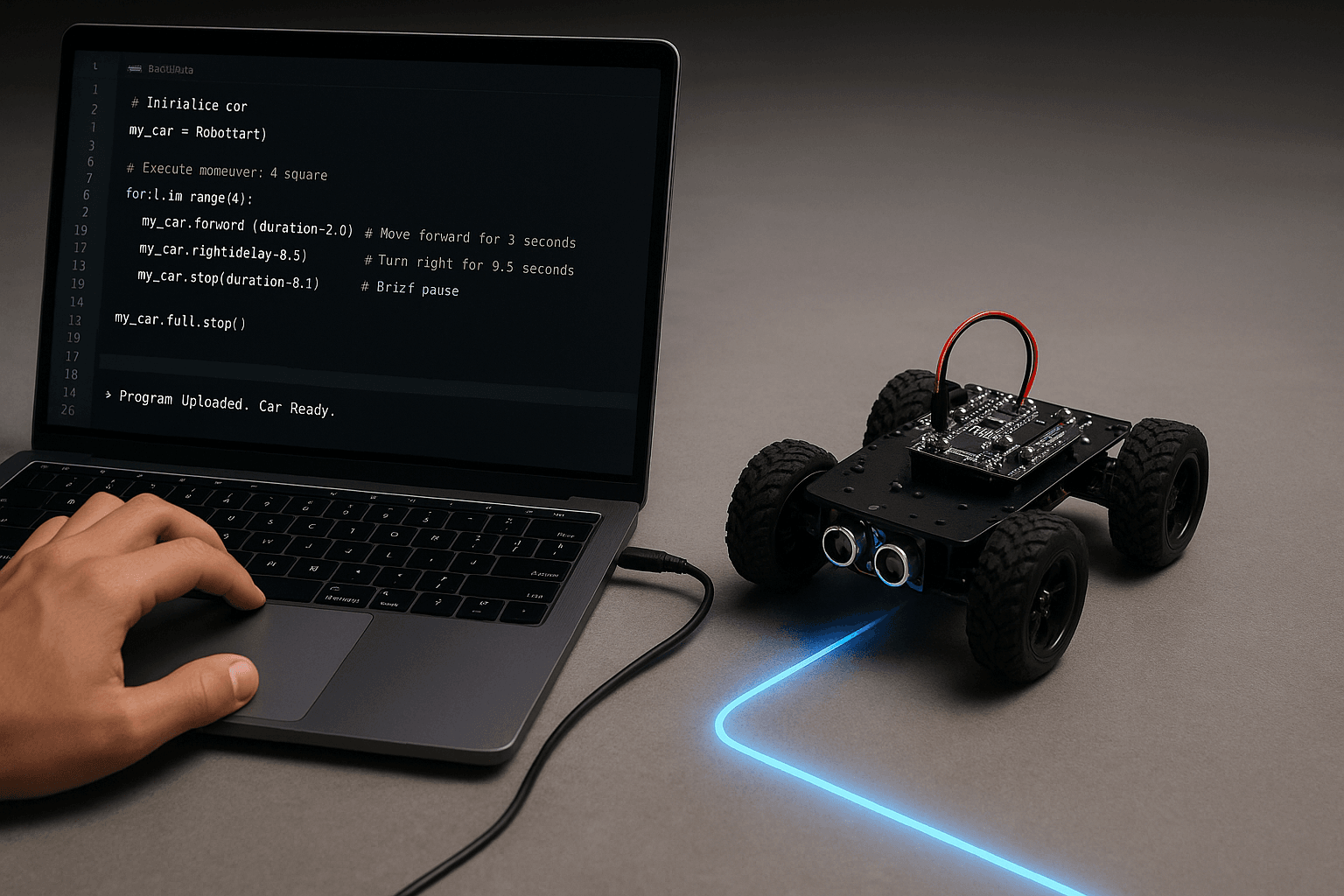
5. Beginner Robot Arm or Gripper
Finally, students may explore a beginner robot arm or gripper. This project introduces mechanical design, where children at a young age build a simple robotic arm that can perform tasks such as picking up or moving objects. It combines mechanics with coding, enabling students to understand how robots perform physical tasks.
The robot arm is often the most exciting project because it resembles the robots kids see in real-world factories and labs. By creating their own version, they gain a deeper understanding of how robots that resemble humans assist in everything from manufacturing to medicine.
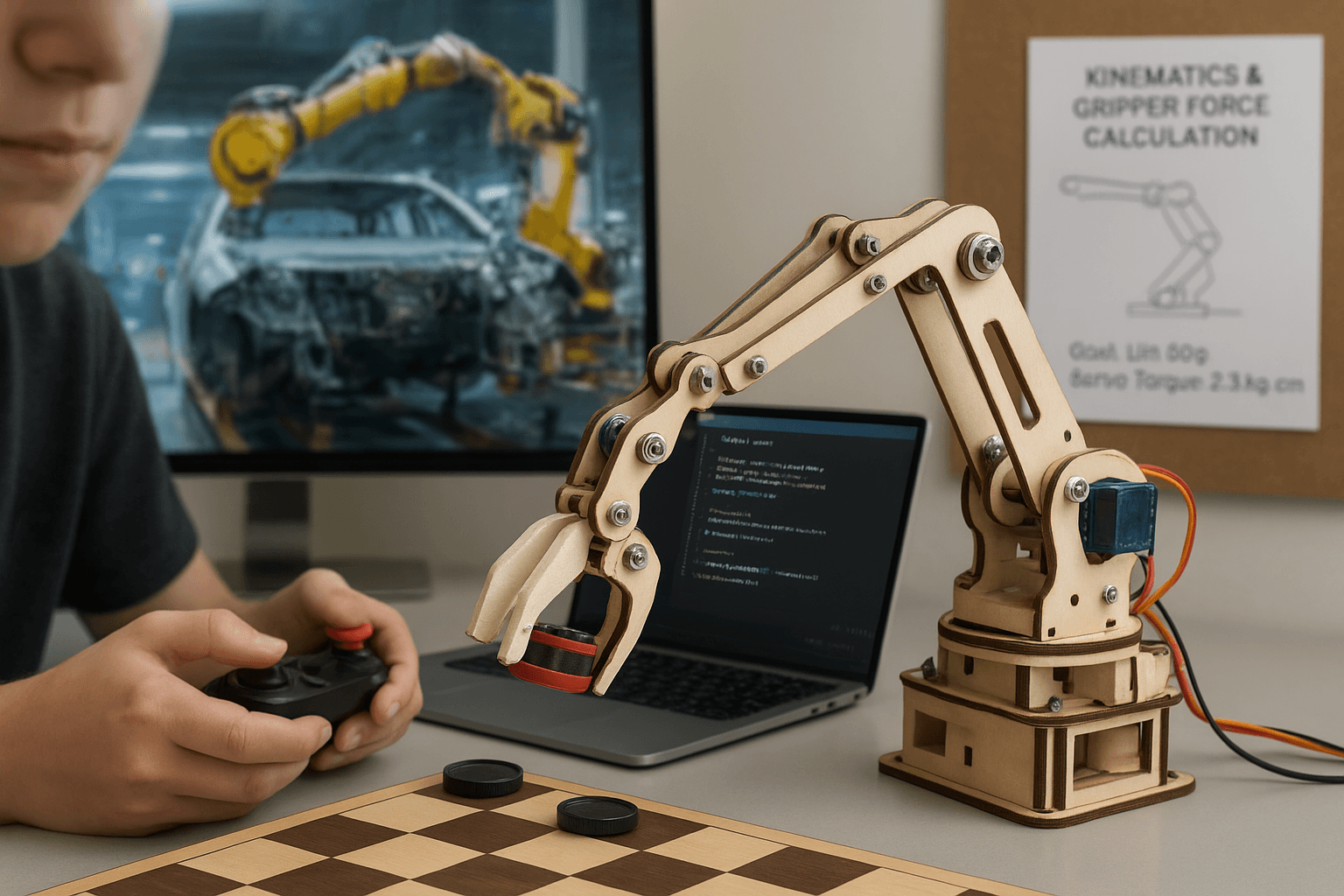
Intro to Robotics Programming for Kids
Hands-On Learning With Programmable Robots For Kids
Constructing robots is just a part of the process—the other part is programming robots. A beginner robotics program for kids is introduced via basic, newbie-friendly tools such as block-based programming and online resources. Kids use colorful drag-and-drop instructions instead of typing complex code. This makes robotics programming for kids easy and fun, like solving a puzzle.
This methodology encourages children to think about logic instead of syntax mistakes. For instance, a student can move blocks labeled “Move Forward,” “Turn Left,” or “Stop,” and the robot executes them immediately. It offers instant feedback, which keeps kids engaged. They see their code work right away.
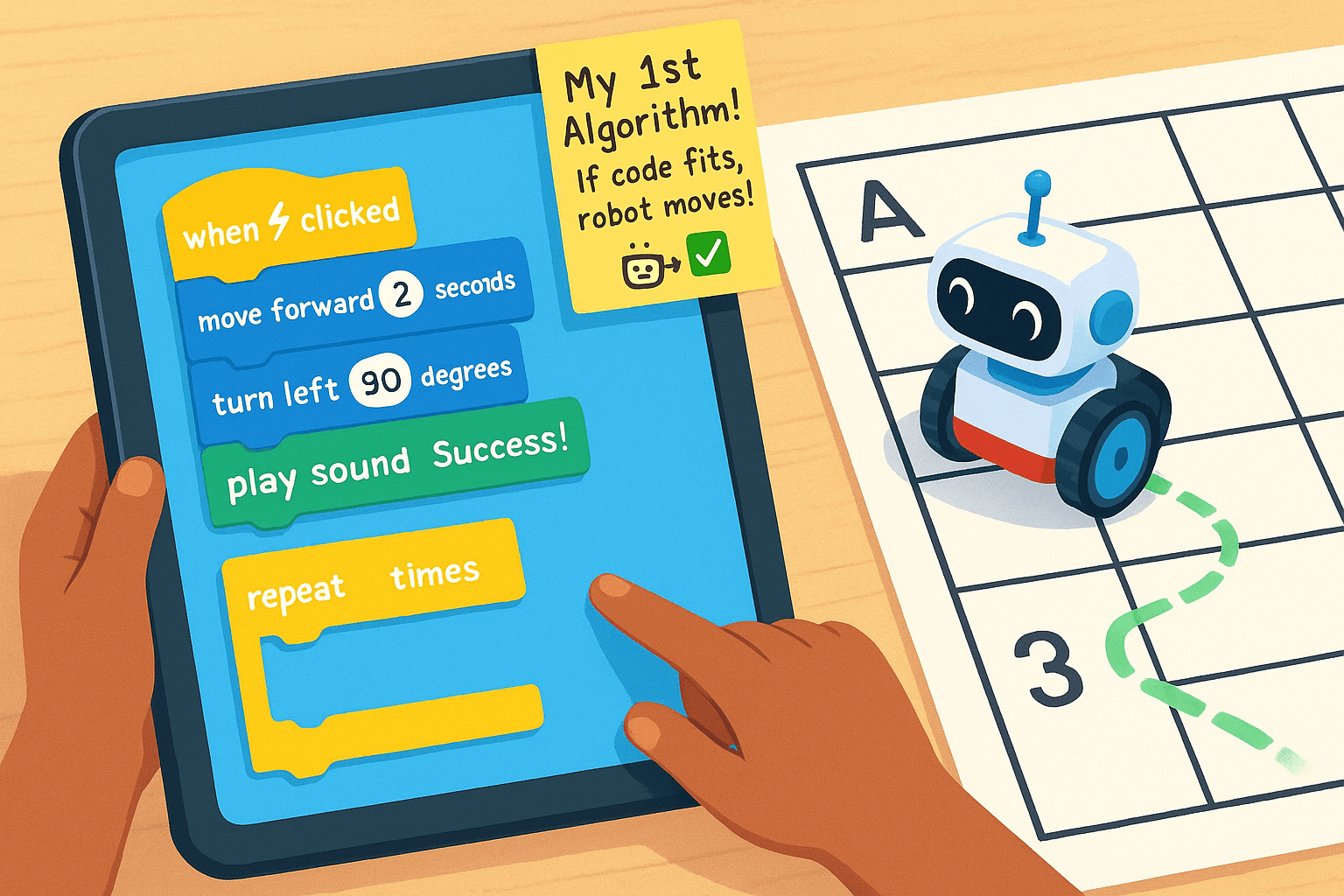
Why Kids' Education Benefits From Learning To Code Robots
Programming robots also develops essential problem-solving skills. When a robot does not work quite right, the student examines their code, makes corrections, and re-tests. This creates resilience, logical thinking, and patience. Robotics can turn kids who don’t like math or science into excited problem solvers, motivating them to continue studying robotics. They get excited about coding robots because they see how their studies apply in real life.
Robotics programming has a direct connection with practical applications. Autonomous vehicles, unmanned aerial vehicles, and even space-based robots are fueled by programming. Learning the basics early helps children prepare for advanced classes. These include computer vision, machine learning, and artificial intelligence. Codeyoung robotics course project ideas ensure that programming classes are fun and interactive. They blend enjoyment with learning, making tough topics feel easy.
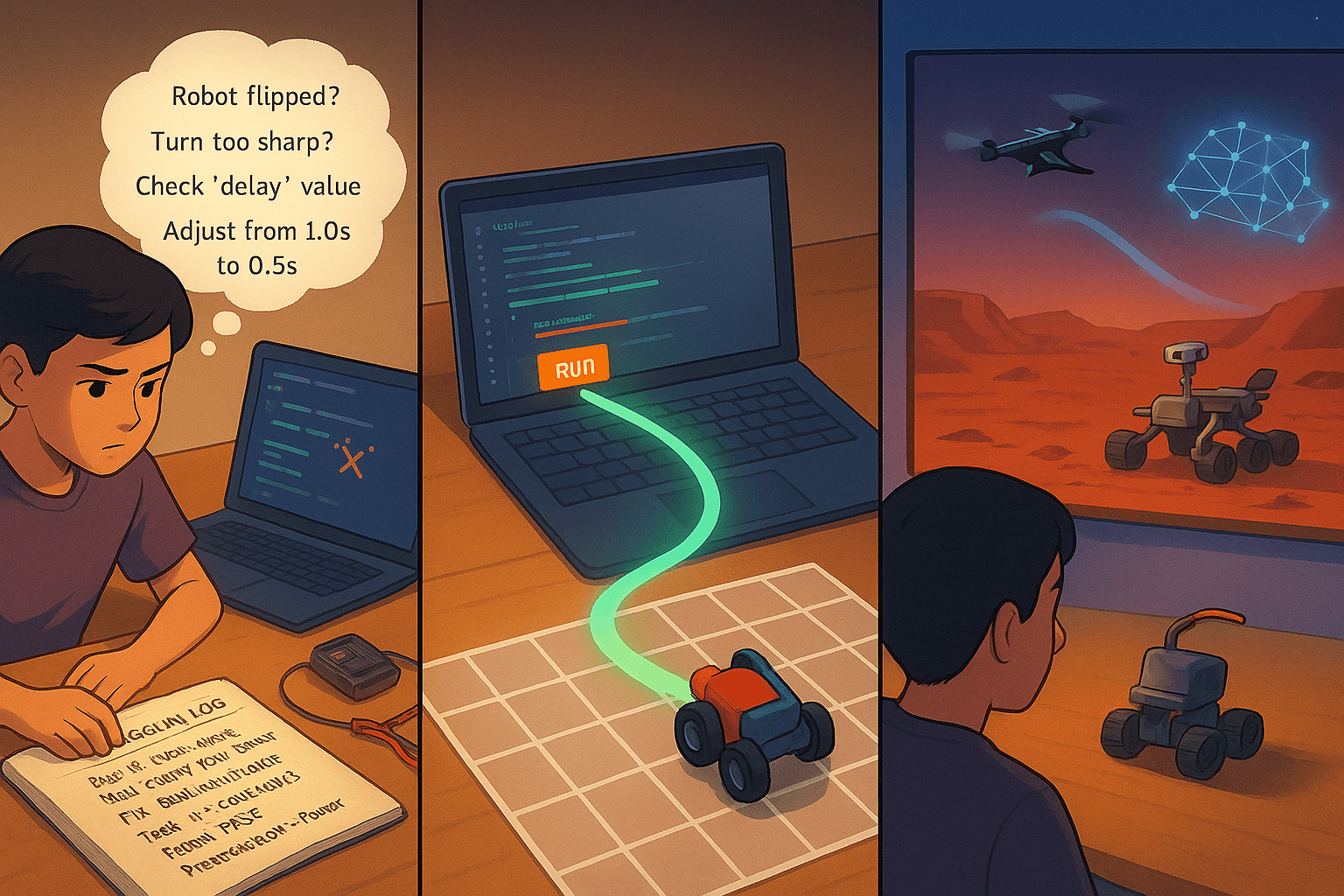
Skills Built in Every Codeyoung Beginner Robotics Course
Every robotics project at Codeyoung is carefully designed for teaching kids more than just technology. While kids do learn engineering, computer science, and programming languages, they also build life skills that prepare them for the future.
More Than Robot Kits: Building Essential STEM Skills
Critical Thinking and Problem-Solving – Robotics boosts problem-solving skills. Kids tackle challenges throughout their projects. Whether a sensor isn’t working or the robot isn’t moving correctly, they learn to troubleshoot, experiment, and find solutions.
Creativity and Innovation – Robotics encourages kids to think outside the box. They can design robots in unique ways, test different programming commands, and even invent new functions. The creative freedom makes learning robotics feel like playing with possibilities.
STEM Skills Development – Robotics combines science, technology, engineering, and math into one fun activity. Instead of learning these subjects separately, kids see how they connect to create something tangible.
Teamwork and Collaboration – Many robotics projects involve working in groups. Students brainstorm together, share tasks, and solve problems as a team. This develops communication and teamwork skills. These are as important as technical knowledge.
By the end of the beginner robotics course, kids finish their first projects. They also gain confidence to explore more. They leave with a stronger foundation in STEM concepts, a passion for innovation, and practical skills that will serve them for years to come.
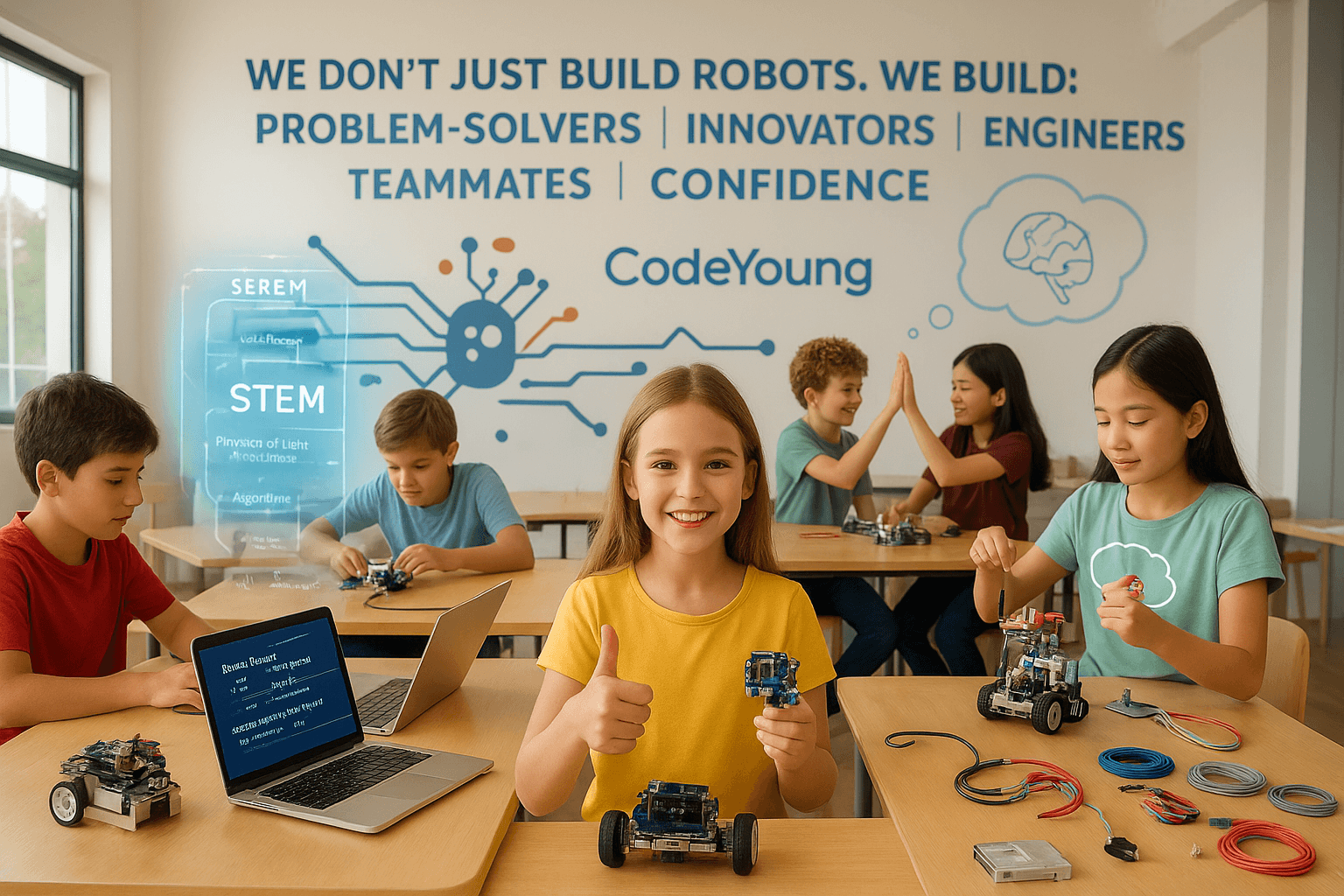
Frequently Asked Questions
What age is best for Codeyoung’s beginner robotics for kids courses?
Beginner robotics for kids at Codeyoung is ideal for kids ages eight and above. In this young age group, most kids are curious and ready to explore robotics through hands-on projects. Younger children can also join if guided by parents or teachers, especially when using simple robotics kits for students with detailed instructions.
As students grow, projects become more advanced, preparing middle school and high school students for deeper STEM learning. Starting early helps kids build critical thinking abilities and problem-solving skills while having so much fun.
What will students learn about robotics programming for kids?
In Codeyoung’s robotics classes, students learn how sensors, motors, and coding work together to make robots perform tasks. Kids use beginner-friendly programming languages to code robots. They teach robots to move, avoid obstacles, and follow lines. These lessons connect directly to real-world applications like self-driving cars and computer vision.
Learning robotics programming for kids helps boost logical thinking and problem-solving skills. Students also gain a better grasp of STEM concepts, creating a solid base for advanced fields like machine learning and artificial intelligence later.
Can kids keep building at home after their first robotics course?
Yes, students can continue learning at home with robotics kits designed for kids. Many kids enjoy practicing building their own robots outside class, using durable materials and step-by-step guides. These kits allow young learners to test coding skills, experiment with new designs, and solve problems creatively.
Parents can support by encouraging hands-on projects that match a child's interests and hobbies, from robot toys to programmable robots. Kids can explore robotics online and play interactive games. This helps them learn at their own pace and build STEM skills.
How do Codeyoung robotics course project ideas foster creativity?
Codeyoung robotics course project ideas are built around hands-on learning, where kids design, test, and improve their own robots. Children learn to think creatively and solve problems by combining building robots with coding. They use durable materials in this process. Projects like line-following robots, robotic arms, or obstacle-avoiding bots challenge kids to innovate and try different approaches.
This process enhances critical thinking, teamwork, and a deeper understanding of STEM skills. Engaging projects let students explore robotics outside of textbooks. This makes learning exciting and fun.
Do students need prior coding experience for their first robotics projects for children?
No prior coding knowledge is required to start the first robotics projects for children. The courses begin with simple robotics kits for students, incorporating block-based coding, making it easy for young children to understand. Detailed instructions guide students step by step, ensuring that even those new to programming can succeed.
Students develop coding skills, problem-solving abilities, and confidence with robots as they progress through their learning. By the end of the first robotics course, kids can tackle more complex projects. They are also ready to prepare for competitions and real-world applications.
